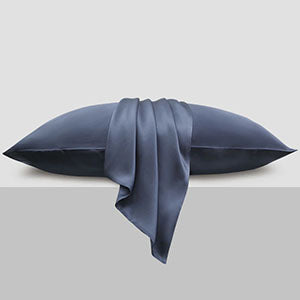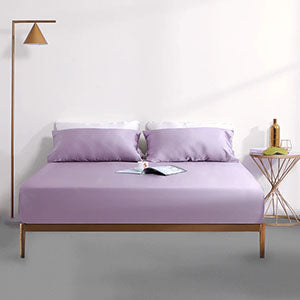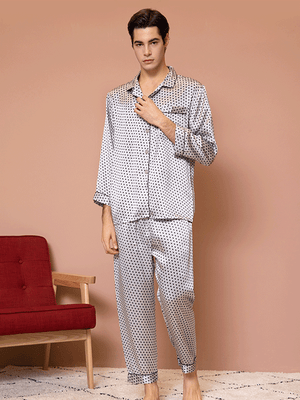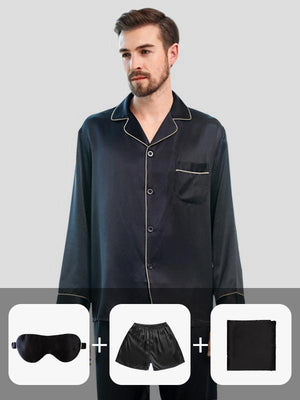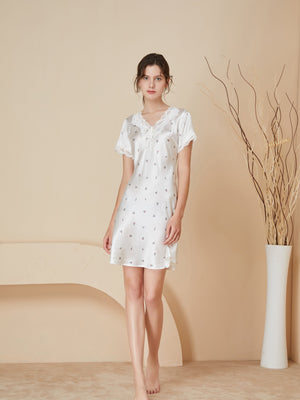Can a Silk Pillowcase Cause Acne? Exploring the Link Between Silk and Skin Health
- ved wangfred
-

In the quest for flawless skin, every detail matters—including what you rest your face on at night. Silk pillowcases have surged in popularity for their promise of reducing wrinkles and frizz, but whispers of a potential downside linger: could this luxurious fabric actually cause acne? Let’s dive into the science and habits that might make silk a friend or foe to your complexion.
Understanding Silk and Its Properties
Silk is a natural fiber produced by silkworms, celebrated for its smooth texture and hypoallergenic qualities. Unlike cotton or polyester, silk fibers are less abrasive, which minimizes friction against the skin. This gentle contact is often touted as a benefit for preventing sleep creases and hair damage. But how does this relate to acne?
The Basics of Acne Formation
Acne develops when hair follicles become clogged with oil, dead skin cells, and bacteria. Factors like hormonal changes, stress, and skincare products can exacerbate breakouts. External triggers, including pillowcase materials, may also play a role by trapping debris or irritating the skin.
Could Silk Pillowcases Contribute to Breakouts?
While silk itself is not inherently pore-clogging, certain conditions might create an acne-friendly environment:
Hygiene Habits Matter
Silk requires delicate care, and some users may avoid frequent washing to preserve its quality. Infrequent cleaning allows oils, sweat, and bacteria to accumulate on the fabric—factors that can transfer back to the skin and clog pores.
Friction vs. Absorption
Silk’s smooth surface reduces friction, which helps prevent irritation. However, it’s less absorbent than cotton. For those with oily skin, this could mean residual sebum remains on the skin’s surface, potentially worsening congestion.
Product Residue Transfer
Nighttime skincare products or hair treatments might adhere to silk fibers. If not washed off properly, these residues could mix with skin oils and contribute to clogged pores over time.
How to Prevent Acne While Using Silk
If you love silk but worry about breakouts, these strategies can help mitigate risks:
Wash Your Pillowcase Regularly
Aim to change your pillowcase every 3–4 days. Use a gentle, fragrance-free detergent to avoid skin irritation, and follow silk-specific care instructions to maintain fabric integrity.
Choose High-Quality Silk
Opt for mulberry silk with a high momme weight (19–22). Lower-quality blends may contain synthetic materials that reduce breathability and trap heat, creating a breeding ground for bacteria.
Blot Excess Oils Before Bed
If you have oily skin, gently pat your face with a clean tissue before lying down. This reduces the amount of sebum transferred to the pillowcase overnight.
Reconsider Heavy Nighttime Products
Thick creams or oils might not fully absorb, especially when combined with silk’s non-absorbent nature. Experiment with lighter formulations to see if breakouts improve.
Silk vs. Other Fabrics: A Comparative Look
How does silk stack up against common pillowcase materials in acne prevention?
Cotton: Breathable but Rough
Cotton absorbs moisture effectively, which can benefit oily skin. However, its coarse texture may irritate sensitive skin and exacerbate conditions like rosacea.
Bamboo: Naturally Antimicrobial
Bamboo-derived fabrics have inherent antibacterial properties, making them resistant to odor and bacterial growth. However, they lack silk’s friction-reducing benefits.
Satin: The Synthetic Alternative
Many “silk” pillowcases are actually polyester satin. These synthetic fabrics trap heat and moisture, potentially worsening acne for some users.
Expert Insights on Silk and Skin Health
Dermatologists emphasize that no single fabric guarantees clear skin. Dr. Emily Torres, a board-certified dermatologist, notes: ‘Silk can be a great option for sensitive skin, but its impact on acne depends largely on individual habits. Consistent cleaning and pairing it with non-comedogenic skincare are key.’
Who Should Avoid Silk Pillowcases?
While many thrive with silk, it might not be ideal if:
- You have extremely oily skin and prefer moisture-wicking fabrics
- You’re prone to fungal acne, which thrives in humid environments
- You’re unwilling to commit to frequent washing routines
Always patch-test new fabrics if you have reactive skin.
Your pillowcase isn’t just a bedtime accessory—it’s a silent partner in your skincare journey. While silk isn’t a direct cause of acne, the real culprits often lie in overlooked habits. By marrying the luxury of silk with mindful hygiene and skincare practices, you might just wake up to happier, healthier skin.
